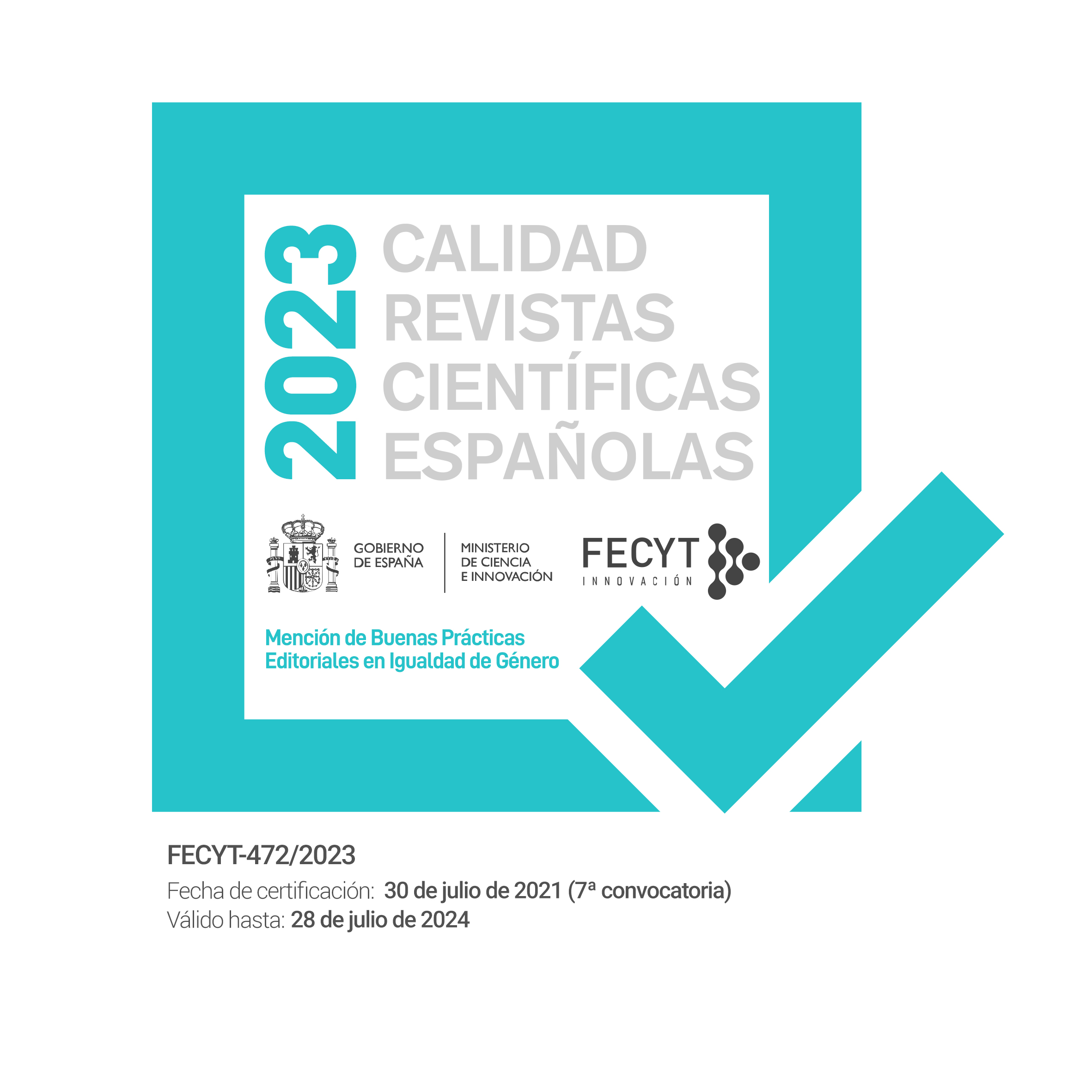Territorial values of the hydraulic heritage and its representation. The waterwheels, mills and factories of Puente Genil (Córdoba)
DOI:
https://doi.org/10.30827/e-rph.v0i25.17885Keywords:
Heritage, Hydraulic framework, Cartography, Territorial and landscape images, Puente GenilAbstract
At the end of the 19th century, in the town of Puente Genil, the current of the river that gives it its name and that turned the mechanisms of water wheels and mills stopped moving the old wheels to generate electricity in the turbines giving artificial light to their houses, streets and industries. The advances of the technique announced the abandonment of the elements that had characterized a landscape for centuries, which today has practically disappeared. Only the remains of five of the more than half of structures related to water as an agricultural resource are preserved and they are precisely the old tails adapted for the flour and electricity factory, La Alianza, the only one that remains in good condition. In a new panorama where the patrimonial attention slips towards the subject and his experiences on the object, the individualized graphic expression for the representation of the territorial and landscape values is postulated as a new horizon to try to systematize. About to enter the end of the period that marks 2020 and whose identity mark is the Genil River in the Sustainable Tourism Plan of Andalusia and also as a close to the Sustainable Development Strategy of Puente Genil, we propose an advance in the study and the protection of the water wheels, mills and irrigation systems of this city and its territory.
Downloads
References
CASTILLO RUIZ, J.; MARTÍNEZ-HIDALGO, C.; PÉREZ CÓRDOBA, G. (2014). “El sistema histórico de riego de la Vega de Granada. Reconocimiento y protección desde la perspectiva del Patrimonio Agrario”. En: Sanchis-Ibor, C.; et al. (eds.). Conference Irrigation, Society and Landscape. Tribute to Tom F. Glick. Valencia: Universidad Politécnica de Valencia, 2014. pp. 763-789. [http://hdl.handle.net/10481/36352].
CHG (1935). Estadística de los aprovechamientos hidráulicos existentes en la actualidad en el río Genil Sevilla. Sevilla: A. Padura.
CHÍAS, P. (2012). “Territorio y cartografía. Paisajes e interpretaciones. Imágenes gráficas, cartográficas y literarias: el caso de Cádiz”, Revista EGA 19, pp. 38-47.
CÓRDOBA DE LA LLAVE, R. (2012). “Un ejemplo de estudio y catalogación del Patrimonio Industrial: Molinos hidráulicos de la provincia de Córdoba”, en Jornadas Andaluzas de Patrimonio Industrial y de la Obra Pública. Sevilla, 2010.
CÓRDOBA DE LA LLAVE, R y VARELA ROMERO, J (2011). El patrimonio histórico hidráulico de la cuenca del Guadajoz. Estudio y catalogación. Baena: Ayuntamiento de Baena.
CÓRDOBA RUIZ, M. (2015). El patrimonio industrial de Puente Genil. (Tesis doctoral inédita). Universidad de Sevilla, Sevilla.
CORTIJO, M. L. (2008). “El Itinerario de Antonino y la Provincia Bética”, Habis 39, pp. 285-308.
DELGADO, M. y CANO, L. (2010). “El agua como motor en la industria: historia y tecnología. El caso de La Alianza de Puente Genil”, Anales de Arqueología Cordobesa, 21-22, pp. 253-278.
DELGADO, M. y ILLANES, A. (2006). “ La Cataluña de Andalucía: Puente Genil o la arqueología industrial al sur de Córdoba”, Patrimonium, 1, pp. 84-95
ESOJO F., (2006). “Puente Genil. Obras hidráulicas en el cauce medio del Genil y su aprovechamiento en la agricultura e industria”, Boletín de la Asociación Provincial de Museos Locales de Córdoba, 7, pp. 249-257.
GREGOTTI, V. (1972). “El territorio de la Arquitectura”. Barcelona: Gustavo Gili.
GONZÁLEZ RÍOS, I. (2011). “El catálogo general y el inventario de bienes reconocidos como instrumentos de protección del patrimonio histórico andaluz. Cuestiones procedimentales y competencias municipales” REALA. Revista de Estudios de la Administración Local y Autonómica 317, pp. 45-71.
MORENO VEGA, A., LÓPEZ GÁLVEZ, Y. & SOBRINO SIMAL, J. (2011). Las harineras cordobesas: historia, tecnología y arquitectura (siglos XIX-XX). Córdoba: Alberto Moreno Vega.
NOGUÉ, J., SAN EUGENIO, J. (2017). “La contribución del paisaje visual en la generación de marcas territoriales”, Boletín AGE, 74, pp. 143-160.
PERAL, J. (2016). Cruzar un río: modificaciones territoriales y paisajísticas en el Guadalquivir (Tesis doctoral inédita). Sevilla: Universidad de Sevilla.
PLAN ESPECIAL DE ORDENACIÓN DE LA VEGA DE GRANADA (2017). Consejería de Medio Ambiente y Ordenación del Territorio.
PRIETO, M. (2018). “Sistemas eco-activos de habitabilidad. Prácticas docentes en la Faja Pirítica Transfronteriza” En Seminario de Investigación Internacional en Valoración y Regeneración del Paisaje Transfronterizo (178-192), Évora, Portugal: RU books.
REYES, J. M. (2011) Evolución y tipos de molinos harineros: del molino a la fábrica. Madrid: Fundación Juanelo Turriano.
RIVERO, G. (2018). “Construcción del paisaje de la Sierra de Cádiz a través de su arquitectura rural: los molinos hidráulicos”, Geo-Conservación, 14, pp. 66-76.
SABATÉ, J. PESOA, M. (2016). Algunos retos en la representación del territorio: el dibujo como instrumento interpretativo, narrativo y de proyecto” Estudios del Habitat, 14 (2) pp. 1-18.
SALA, P. (2015). “Presa, paret, paisatge”, dins Nogué, J.; Puigbert, L.; Bretcha, G. (eds.). Paisatge, patrimoni i aigua. La memòria del territori. Olot: Observatori del Paisatge de Catalunya. (Plecs de Paisatge; Reflexions; 4), p. 70-87.
SEGUÍ, J. (2003). “Clasificaciones del dibujar y de los dibujos”, Revista EGA, 8, pp. 5-10.
SILVA, R. y FERNANDEZ SALINAS, V. (2017). “El nuevo paradigma del patrimonio y su consideración con los paisajes : conceptos, métodos y prospectivas”, Documents d'anàlisi geogràfica, Vol. 63 Núm. 1.
SOLÀ-MORALES, M y PARCERISA, J (1981). “La forma de un país”, Quaderns dArqutiectura i Urbanisme, 1, pp. 4-17.
ZARZA, D. et all.(1991). Comarca y Ordenación Territorial. Un ejemplo Metodológico. Alto Guadalquivir de Córdoba. Sevilla: Consejería de Obras Públicas y Transportes, Dirección General de Ordenación del Territorio.

Downloads
Published
How to Cite
Issue
Section
License
Las/os autoras/es conservan los derechos de autoría y otorgan a la revista el derecho de primera publicación (reproducción, edición, distribución, comunicación pública y exhibición).
Más infomación en Sobre la revista > Aviso de derechos de autor/a














